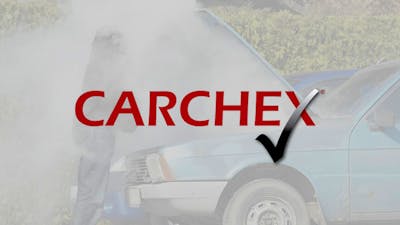How Much Does It Cost to Replace a Control Arm?
Your vehicle’s suspension relies on multiple interconnected pieces to work properly. One important component is called the control arm. If your control arms are damaged or worn, your mechanic will recommend replacing them. The budget for a job like this runs from about $400 to about $1,000.
Popular Warranty Providers
What is a Control Arm and What Does It Do?
Your suspension needs to connect the chassis of the vehicle to the steering components that then attach to the wheel. A key piece in the puzzle is the control arm, often referred to as the ”lower control arm.” This is a part typically made from stamped steel or cast aluminum that uses a ball joint and busing at the wheel end and is bolted to the frame or chassis inboard. The control arms help maintain your steering knuckle's contact with the vehicle's structure.
Why Does My Car Need a Control Arm?
Control arms are robust parts unlikely to fail in normal use. Either an impact or some other force has unexpectedly acted on your control arm to damage it, or corrosion resulted over time. Another possibility is that the mechanic needs to replace the bushing and perhaps the ball joint, and the control arm may be part of a kit she wishes to use to solve a problem rather than try to replace the individual parts (which would actually cost more money).
How Do I Know If I Need to Replace a Control Arm?
Sloppy handling, banging over bumps, and squeaks are all indicative of a problem with your vehicle’s suspension. Your mechanic can diagnose the exact problem and identify which parts need replacing.
Do Control Arms Need To Be Replaced In Pairs?
If a curb strike or other type of impact has damaged your control arm, you may need to only deal with one side. However, if corrosion or wear was the culprit, expect to do two. Ask your mechanic which is the best course of action.
Do I Need To Align My Car After Replacing a Control Arm?
An alignment is a routine part of the job when suspension components that affect steering are involved. An alignment is usually an approximately $125 charge and has benefits beyond just putting the control arm job to bed. Read more about wheel alignment here.
What About Other Components?
Control arms are designed to last the life of a vehicle. If they have failed for some reason, it would be wise to check all of the suspension components and wheel bearings to see if other work is warranted. Once the wheels are coming off anyway, it makes sense to do a brake health check during this job. Since tires are coming off, why not rotate them?
How Much Does A Control Arm Replacement Cost?
Different vehicles use different control arm designs. Some control arms have parts assembled onto them and are a sort of kit. Others are just a static part. The control arm itself will likely only account for 25% to 50% of this job. Labor will be the largest cost involved. Ball joints are usually part of this job as well. Affordable mainstream vehicle models will have relatively low cost control arm replacement costs, and high-end luxury models will cost more. We would budget from $400 to $1,000 for this job.
Do I Have to Replace My Control Arms?
One way faulty control arms are discovered is during an annual state vehicle inspection. In this case, you need to replace what the mechanic finds is in need of repairs. Other times, the mechanic discovers the problem when doing a multi-point inspection or during a test drive after a customer reports hearing or feeling something is amiss. You should replace control arms sooner rather than later since your steering is part of the equation, and one of the ways you control the car itself.
Who Can Replace My Control Arms?
Any suspension-related job is perfect for your trusted local independent shop to handle. Some vehicle repair chains may take on the job, but we would be hesitant to let them. Your dealer can certainly handle a control arm replacement job, but you will likely pay up to 30% more for the same result.
Can I Replace My Vehicle’s Control Arm By Myself?
On a scale of 1 to 5, where replacing wiper blades is a 1, and an engine overhaul is a 5, replacing a control arm is a 2 or 3. You can do it, but will you have a bearing press? Do you have a lift and jack stands? Can you align the vehicle at the end of the job? This is one of those jobs that is possible to do on your own but not very time-efficient. If you mess it up, the car may not be drivable.
Read more on the topic of Owning a Car here.





















